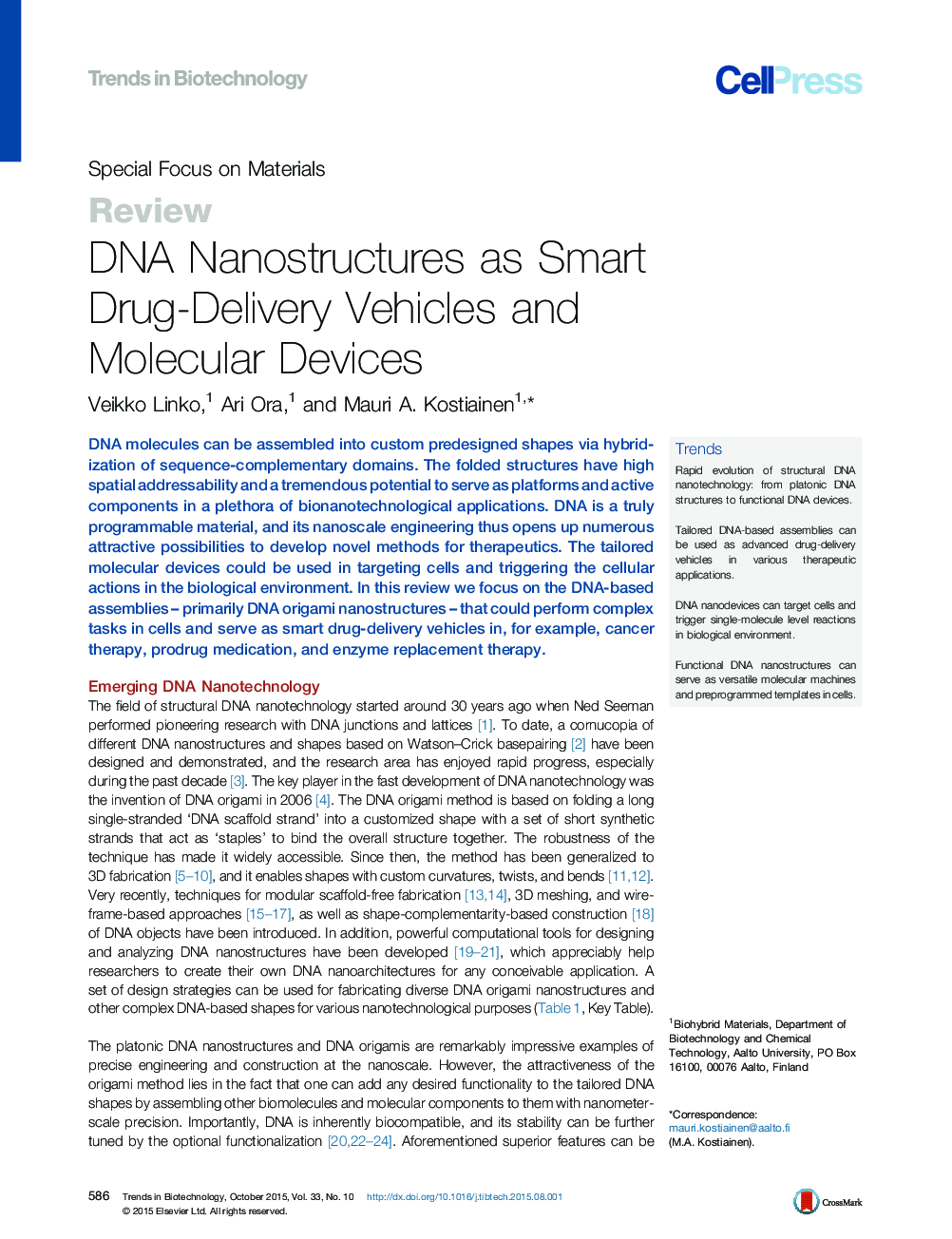| Article ID | Journal | Published Year | Pages | File Type |
|---|---|---|---|---|
| 36890 | Trends in Biotechnology | 2015 | 9 Pages |
DNA molecules can be assembled into custom predesigned shapes via hybridization of sequence-complementary domains. The folded structures have high spatial addressability and a tremendous potential to serve as platforms and active components in a plethora of bionanotechnological applications. DNA is a truly programmable material, and its nanoscale engineering thus opens up numerous attractive possibilities to develop novel methods for therapeutics. The tailored molecular devices could be used in targeting cells and triggering the cellular actions in the biological environment. In this review we focus on the DNA-based assemblies – primarily DNA origami nanostructures – that could perform complex tasks in cells and serve as smart drug-delivery vehicles in, for example, cancer therapy, prodrug medication, and enzyme replacement therapy.
TrendsRapid evolution of structural DNA nanotechnology: from platonic DNA structures to functional DNA devices.Tailored DNA-based assemblies can be used as advanced drug-delivery vehicles in various therapeutic applications.DNA nanodevices can target cells and trigger single-molecule level reactions in biological environment.Functional DNA nanostructures can serve as versatile molecular machines and preprogrammed templates in cells.
